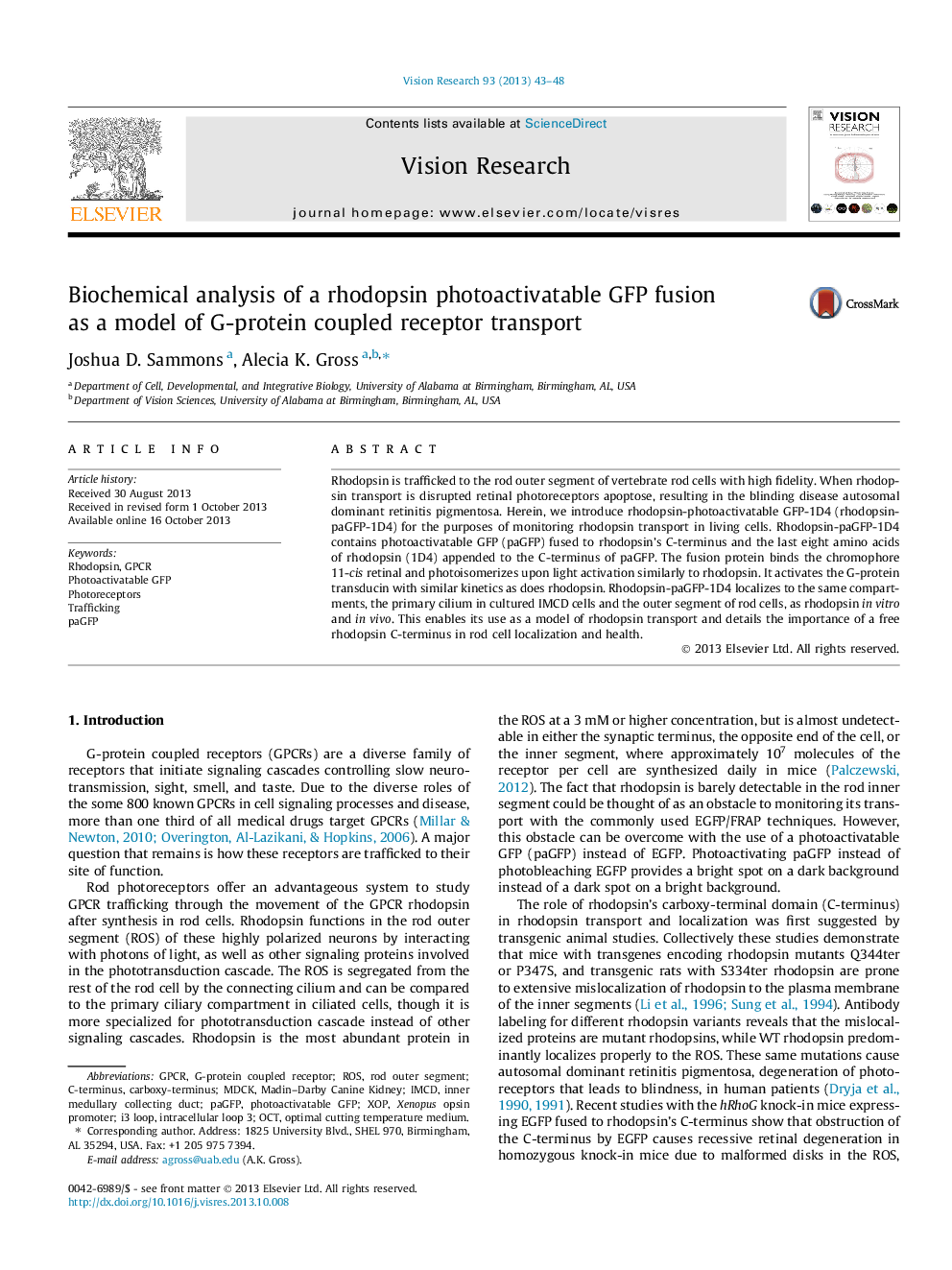| Article ID | Journal | Published Year | Pages | File Type |
|---|---|---|---|---|
| 6203526 | Vision Research | 2013 | 6 Pages |
â¢Both rhodopsin and paGFP fold properly in the rho-paGFP-1D4 fusion protein.â¢Addition of paGFP to rhodopsin's C-terminus does not inhibit transducin activation.â¢The fusion protein localizes similarly to rhodopsin in culture cells and rod cells.â¢Rhodopsin-paGFP-1D4 can be used as a model of rhodopsin transport.
Rhodopsin is trafficked to the rod outer segment of vertebrate rod cells with high fidelity. When rhodopsin transport is disrupted retinal photoreceptors apoptose, resulting in the blinding disease autosomal dominant retinitis pigmentosa. Herein, we introduce rhodopsin-photoactivatable GFP-1D4 (rhodopsin-paGFP-1D4) for the purposes of monitoring rhodopsin transport in living cells. Rhodopsin-paGFP-1D4 contains photoactivatable GFP (paGFP) fused to rhodopsin's C-terminus and the last eight amino acids of rhodopsin (1D4) appended to the C-terminus of paGFP. The fusion protein binds the chromophore 11-cis retinal and photoisomerizes upon light activation similarly to rhodopsin. It activates the G-protein transducin with similar kinetics as does rhodopsin. Rhodopsin-paGFP-1D4 localizes to the same compartments, the primary cilium in cultured IMCD cells and the outer segment of rod cells, as rhodopsin in vitro and in vivo. This enables its use as a model of rhodopsin transport and details the importance of a free rhodopsin C-terminus in rod cell localization and health.
